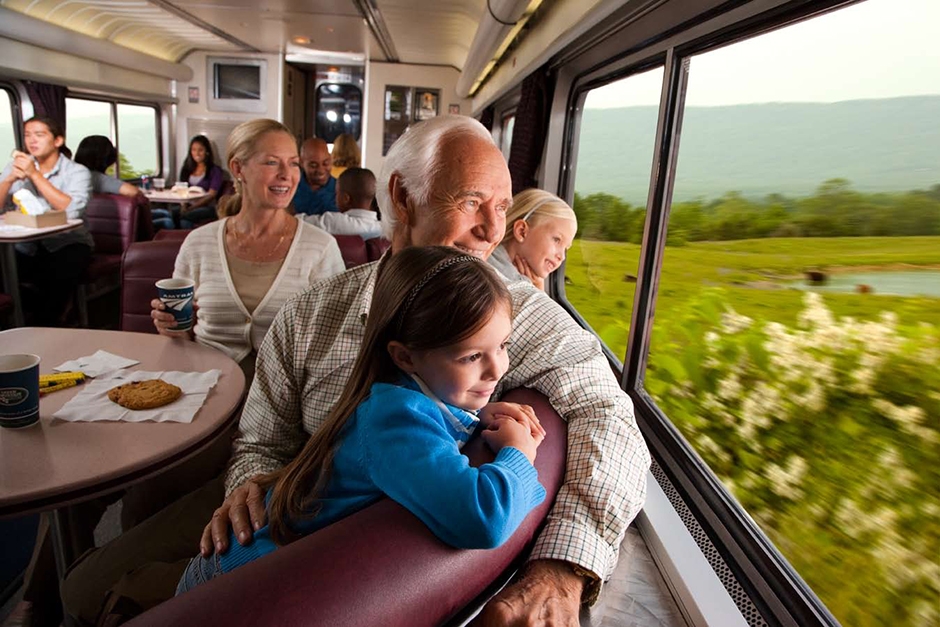Trips for senior adults offer a unique blend of relaxation, adventure, and cultural immersion, tailored to the specific needs and preferences of this vibrant demographic. This guide explores diverse travel options, from relaxing cruises to adventurous excursions, considering accessibility, health, budget, and the crucial social and emotional aspects of travel for older adults. We’ll delve into practical planning tips, essential resources, and ways to ensure a safe and fulfilling journey for seniors, helping them create unforgettable memories.
Whether seeking a tranquil beach escape, a culturally rich exploration of historical sites, or an active adventure, we’ll cover a range of trip types catering to various fitness levels and mobility needs. We’ll also address important considerations like accessibility, health and safety, budgeting, and the social benefits of travel for seniors, empowering them to plan their dream getaways with confidence and ease.
Accessibility and Accommodation
Planning trips for senior adults requires careful consideration of their unique needs, particularly regarding accessibility and accommodation. Ensuring a comfortable and enjoyable experience hinges on providing appropriate support and resources throughout the journey. This section details essential accessibility features, examples of senior-friendly accommodations, and suitable transportation options.
Essential Accessibility Features for Seniors with Mobility Limitations
Prioritizing accessibility ensures seniors can fully participate in travel activities. Careful planning minimizes potential challenges and enhances their overall experience. The following features are crucial for accommodating mobility limitations:
- Wheelchair accessibility: Ramps instead of stairs, wide doorways, accessible restrooms, and elevators are essential for wheelchair users.
- Grab bars and handrails: These provide stability and support in bathrooms, hallways, and other areas.
- Adaptive equipment: Consider the availability of items such as shower chairs, raised toilet seats, and walkers.
- Accessible transportation: Ensure easy access to buses, trains, and taxis with features like ramps and wide doorways.
- Clear signage and wayfinding: Large, easy-to-read signage and clear pathways minimize confusion and disorientation.
- Spacious rooms and common areas: Adequate space allows for easier maneuvering with wheelchairs or other mobility aids.
- Accessible dining options: Tables and chairs with appropriate heights, and accessible menus.
Examples of Senior-Friendly Accommodations
Many hotels, resorts, and cruise lines cater specifically to the needs of senior travelers. These accommodations offer features designed to enhance comfort and ease of movement.
Hotel Example: Many Marriott hotels offer accessible rooms with features such as roll-in showers, grab bars, and lowered countertops. They often have staff trained to assist guests with disabilities.
Resort Example: Some resorts, particularly those specializing in wellness and relaxation, offer accessible villas or bungalows with private patios and adapted bathrooms. They may also provide accessible pools and spa facilities.
Cruise Line Example: Several cruise lines offer accessible staterooms with wider doorways, grab bars, and adapted bathrooms. They also provide accessible shore excursions and onboard activities. Many offer assistance with embarking and disembarking.
Transportation Options for Seniors
Selecting appropriate transportation is vital for ensuring a smooth and stress-free journey for senior travelers.
- Private car services: These provide door-to-door service and can accommodate wheelchairs or other mobility aids. Drivers are often trained to assist passengers with their luggage and other needs.
- Accessible public transport: Many cities offer accessible buses and trains with ramps, elevators, and designated seating areas for seniors and individuals with disabilities. However, it’s essential to check the accessibility features of specific routes and lines in advance.
- Specialized tour buses: Some tour operators provide buses equipped with lifts, ramps, and wider aisles, making them suitable for seniors with mobility limitations. These buses often offer comfortable seating and climate control.
Budgeting and Planning
Planning a trip requires careful consideration of finances to ensure a comfortable and enjoyable experience without exceeding your budget. This section provides a structured approach to budgeting for senior travel, including strategies for finding cost-effective options.
Creating a Realistic Budget
To create a realistic budget, start by identifying your trip’s essential components: transportation, accommodation, activities, and miscellaneous expenses. Begin by estimating the cost of each category. For transportation, consider airfare, train tickets, or gas expenses for a road trip. Factor in potential baggage fees and transportation to and from airports or train stations. For accommodation, research various options like hotels, motels, vacation rentals, or senior-friendly lodgings. Note that prices vary significantly depending on location and amenities. Activities should encompass sightseeing, tours, entertainment, and dining. Finally, allocate funds for miscellaneous expenses such as souvenirs, tips, laundry, and unexpected costs. Using a spreadsheet or budgeting app can help organize these costs effectively. Remember to build in a buffer for unforeseen circumstances. For example, if your estimated budget is $3000, adding a 10% buffer ($300) would create a more resilient budget.
Finding Affordable Travel Deals and Discounts
Numerous opportunities exist for seniors to find affordable travel deals. Many airlines, hotels, and tour operators offer senior discounts, often for travelers aged 60 or older. Check websites for specific age requirements and discount codes. Consider traveling during the off-season or shoulder season (the periods between peak and off-season) to benefit from lower prices and fewer crowds. Travel websites and comparison tools can help you find the best deals on flights and accommodations. Look for package deals that combine flights and hotels, often offering significant savings. Consider joining a senior travel club or association, as these often provide exclusive discounts and access to special offers. For example, AARP offers travel discounts to its members, and many other organizations offer similar benefits.
Sample Itineraries for Different Budget Levels
Below are sample itineraries illustrating how to travel on different budget levels. These examples assume a 7-day trip for one person. Remember that these are estimates, and actual costs may vary depending on specific choices and location.
| Budget Level | Transportation | Accommodation | Activities | Miscellaneous | Total Estimated Cost |
|---|---|---|---|---|---|
| Budget ($1000) | Bus travel, potentially with a long-distance bus company. | Budget-friendly motel or hostel. Consider sharing a room with a travel companion. | Free activities such as walking tours, parks, and exploring local markets. Pack lunches. | $100 | $1000 |
| Mid-Range ($2500) | Flights with a budget airline. | Comfortable hotel or Airbnb. | Mix of free and paid activities, including some guided tours. | $250 | $2500 |
| Luxury ($5000) | First-class flights or train travel. | High-end hotel or resort with amenities. | A range of premium activities, including exclusive tours and fine dining. | $500 | $5000 |
Technological Resources for Senior Travelers
Technology plays an increasingly vital role in enhancing the travel experience for senior adults, offering convenience, safety, and peace of mind. From pre-trip planning to navigating unfamiliar territories, numerous digital tools are available to simplify and enrich the journey. This section explores some of the most helpful technological resources designed with accessibility in mind.
Helpful Apps and Websites for Trip Planning and Management
Several apps and websites cater specifically to the needs of senior travelers, offering features such as large font sizes, voice control, and simplified interfaces. These tools help streamline the planning process, manage bookings, and access essential travel information. For example, AARP’s website provides travel resources tailored to older adults, including articles on accessible travel options and tips for planning a senior-friendly trip. Many online travel agencies also offer accessible booking options and filters to find senior-friendly accommodations and transportation. Additionally, apps like Google Trips (now integrated into Google Maps) allow users to organize itineraries, save offline maps, and access real-time information on flights and other transportation. These apps can be configured with large text and voice commands for easier use.
Technology’s Role in Enhancing Communication and Safety During Travel
Technology significantly improves communication and safety for senior travelers, reducing anxieties and fostering independence.
- GPS Tracking and Location Sharing: Apps like Life360 or Find My allow family members to track a senior traveler’s location in real-time, providing reassurance and the ability to quickly assist in emergencies. This feature is particularly helpful for those traveling alone or in unfamiliar areas.
- Medical Alert Systems: Wearable medical alert devices, such as those offered by companies like Medical Guardian, provide immediate access to emergency services with the push of a button. These devices often include GPS tracking for precise location identification.
- International Communication Apps: Apps like WhatsApp or Skype offer affordable and convenient ways to stay connected with loved ones back home, regardless of location. The ability to make voice or video calls can reduce feelings of isolation and provide a sense of security.
- Translation Apps: For international travel, apps like Google Translate can be invaluable in overcoming language barriers, assisting with ordering food, navigating public transport, or communicating with local residents.
Using GPS and Navigation Tools Effectively for Senior Travelers
Effective use of GPS and navigation tools is crucial for independent travel. For seniors, certain considerations can enhance the experience and minimize frustration.
- Adjusting Font Size and Display Settings: Most GPS apps allow users to adjust the font size and brightness of the display, ensuring readability even for those with visual impairments. Voice guidance features are also readily available on most devices.
- Planning Routes in Advance: Downloading maps and routes offline before traveling ensures navigation remains functional even in areas with poor cellular service. This is particularly useful in rural areas or international locations.
- Familiarizing Yourself with the App: Before embarking on a trip, take time to familiarize yourself with the chosen GPS app’s features and functionality. Practice using it in a familiar setting to build confidence and avoid confusion during travel.
- Utilizing Landmarks: While GPS is helpful, it’s also advisable to note down key landmarks along the planned route. This provides a backup navigation method in case of technical difficulties or unexpected disruptions.
Final Conclusion
Planning a trip for senior adults requires careful consideration of various factors, but the rewards are immense. By prioritizing accessibility, health, and budget, while also focusing on the social and emotional benefits of travel, you can create an enriching experience that fosters independence, connection, and lasting memories. This guide provides the tools and resources to help seniors embark on fulfilling adventures, ensuring their journeys are both enjoyable and safe.




